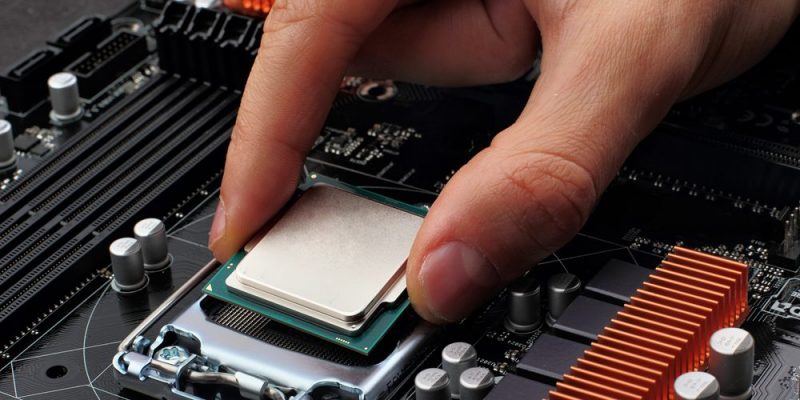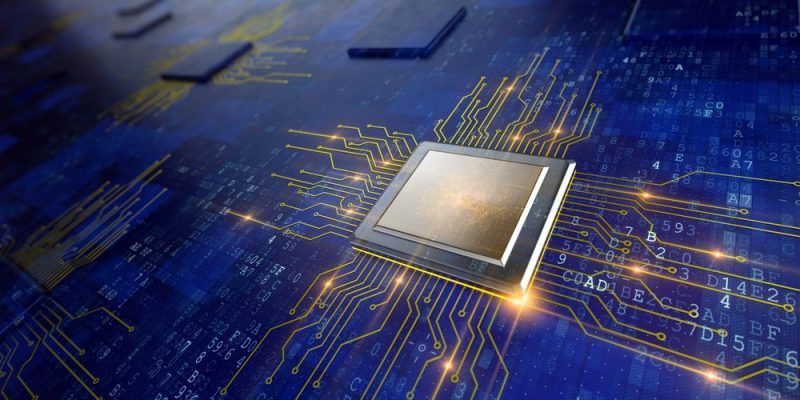We explain what a microprocessor is, the history and characteristics of this integrated circuit. Also, what it is for and its functions.

What is a microprocessor?
It is called a microprocessor or simply a processor. to the central integrated circuit of a computer system where logical and arithmetic operations (calculations) are carried out to allow the execution of programs, from the Operating System to the application Software.
a microprocessor can operate with one or more CPUs (Central Processing Units), each consisting of registers, a control unit, an arithmetic-logical unit and a floating-point calculation unit (or mathematical coprocessor).
Likewise, it has generally been connected by a socket to the motherboard or motherboard, along with a heat dissipation system made up of certain thermal dissipation materials and a fan cooler (internal fan).
While the same microprocessor can have one or more physical or logical cores, in which all the calculation work is carried out, the same computer system can have several processors working in parallel.
The performance of these processors is not easy to measure but the clock frequency (measured in hertz) is usually used to distinguish between the power of one and the other.
See also: Motherboard
History of the microprocessor
Microprocessors emerged as a product of the technological evolution of two specific branches: computing and semiconductors. Both had their beginnings in the mid-20th century, in the context of World War II, with the invention of the transistor, which replaced vacuum tubes.
From then on, silicon was used to generate simple electronic circuits, later (the beginning of the 1960s) giving rise to the creation of the first digital circuits: Transistor-Resistor Logic (RTL), Diode Transistor Logic (DTL). , Transistor-Transistor Logic (TTL) and Emitter Complemented Logic (ECL).
The next step towards microprocessors would be the invention of integrated circuits (SSI and MSI), thus allowing the beginning of the aggregation and miniaturization of components. The first calculators to use this technology, however, required between 75 and 100 integrated circuits, which was impractical. And so, the next step in the reduction of computer architecture was the development of the first microprocessors.
The first processor was the Intel 4004 manufactured in 1971. It contained 2,300 transistors and with just 4 bits of capacity it could perform 60,000 logical operations per second, at a clock frequency of 700 Hz. From then on, the technological race invested in the development of better and more powerful microchips: 8 bits , 16 bits, 32 bits and 64 bits, currently reaching frequencies above 3 GHz.
Microprocessor Features

Microprocessors resemble a small miniature digital computer, so they have their own architecture and perform operations under a control program. This architecture is composed of:
- Encapsulated A ceramic coating that covers the silicon and protects it from the elements (such as oxygen in the air).
- Cache A type of ultra-fast memory available to the processor, so that it does not use RAM except when necessary, since the various levels of the cache memory store data in use for immediate recovery.
- Mathematical coprocessor Called the floating point unit, it is the portion of the processor that is responsible for logical and formal operations.
- Records A short working memory in the processor, designed to keep track of its own operation and conditions.
- Ports The conduits that allow the processor to communicate information with the rest of the system components.
What is a microprocessor for?
Microprocessors are the “brain” of the computer: its logical center of arithmetic and logical operations, where all the system programs go to run both those of the Operating System and the applications executed by the user. The system's binary logic and memory accesses also occur there. That is to say: the processor is the information engine of the computer.
Microprocessor function

A microprocessor operates based on a series of elementary instructions that are preprogrammed and stored in the form of binary code. These instructions will be organized in the main memory, and are given according to several phases, which are:
- Prefetch Or prereading the instruction from the system's main memory.
- Fetch Sending the specific instruction to the decoder.
- Decoding. Translation of the instruction into a series of operations to be performed, and reading of the operands necessary to do so.
- Execution Carrying out the instruction by the system components.
- Writing Recording the results back into main memory, or into registers.
These phases are carried out in several CPU cycles, and their duration depends on the frequency at which the microprocessor works.





